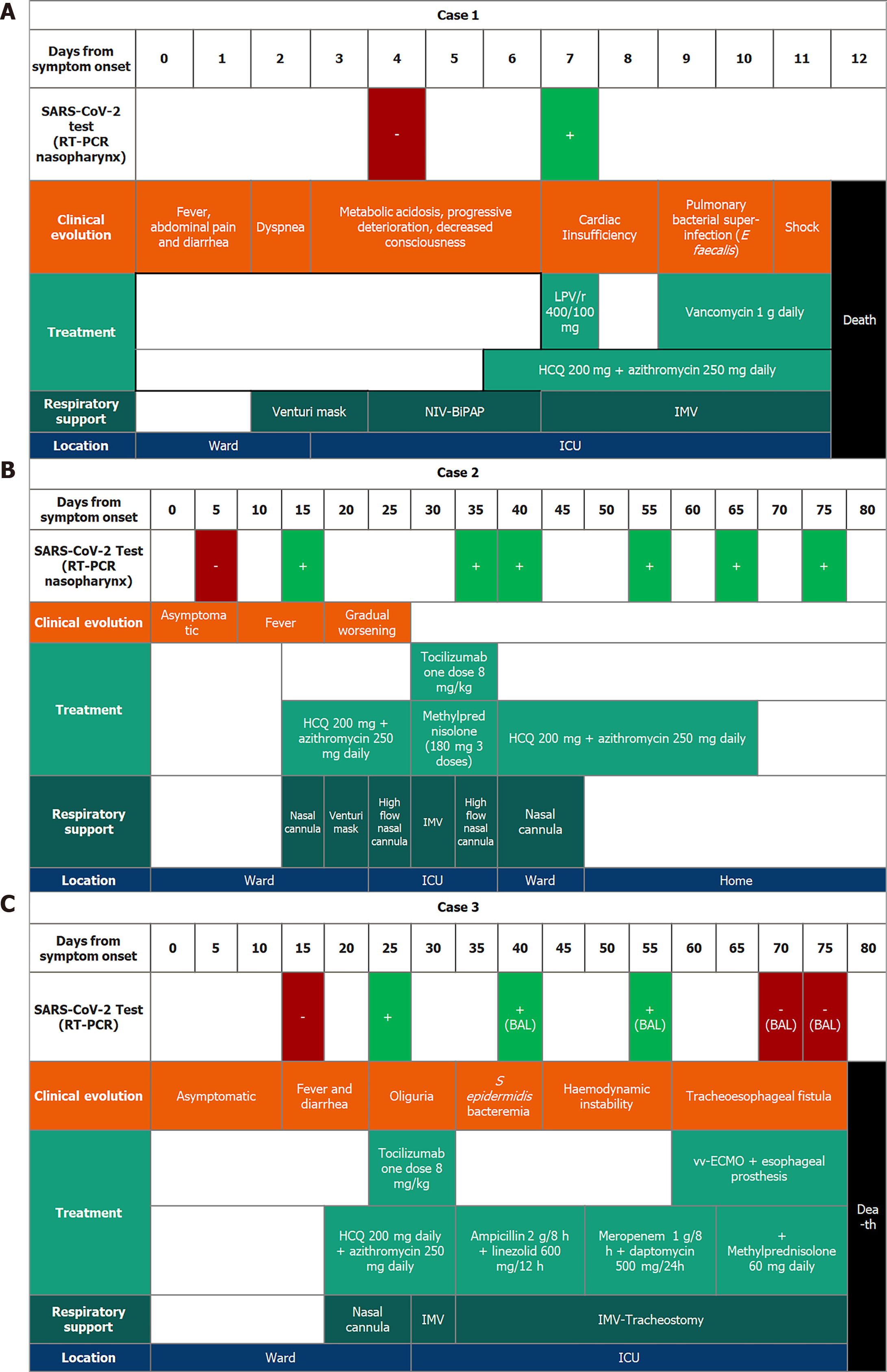Copyright
©The Author(s) 2020.
World J Hepatol. Oct 27, 2020; 12(10): 870-879
Published online Oct 27, 2020. doi: 10.4254/wjh.v12.i10.870
Published online Oct 27, 2020. doi: 10.4254/wjh.v12.i10.870
Figure 1 Clinical evolution of each case in a chronological perspective.
A: (Case 1) Although the first reverse transcription polymerase chain reaction of severe acute respiratory syndrome coronavirus 2 was negative for the first few days, dyspnea became worse requiring intensive care unit admission. A single dose of lopinavir/ritonavir was administered on day 7; B: (Case 2) A dose of tocilizumab was administered on day 33. The patient improved progressively until he was discharged home; and C: (Case 3) A dose of tocilizumab was administered on day 28. The patient suffered a progressive worsening. A tracheoesophageal fistula was detected and an oesophageal prosthesis was placed. In addition, a venovenous extracorporeal membrane oxygenation was implemented to improve the patient's oxygenation. BAL: Bronchoalveolar lavage; ICU: Intensive care unit; IMV: Invasive mechanical ventilation; LPV/r: Lopinavir/ritonavir; NIV: Non-invasive ventilation; RT-PCR: Reverse transcription polymerase chain reaction; vv-ECMO: Venovenous extracorporeal membrane oxygenation.
- Citation: Alconchel F, Cascales-Campos PA, Pons JA, Martínez M, Valiente-Campos J, Gajownik U, Ortiz ML, Martínez-Alarcón L, Parrilla P, Robles R, Sánchez-Bueno F, Moreno S, Ramírez P. Severe COVID-19 after liver transplantation, surviving the pitfalls of learning on-the-go: Three case reports. World J Hepatol 2020; 12(10): 870-879
- URL: https://www.wjgnet.com/1948-5182/full/v12/i10/870.htm
- DOI: https://dx.doi.org/10.4254/wjh.v12.i10.870









